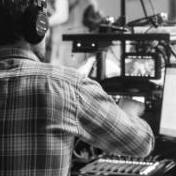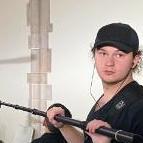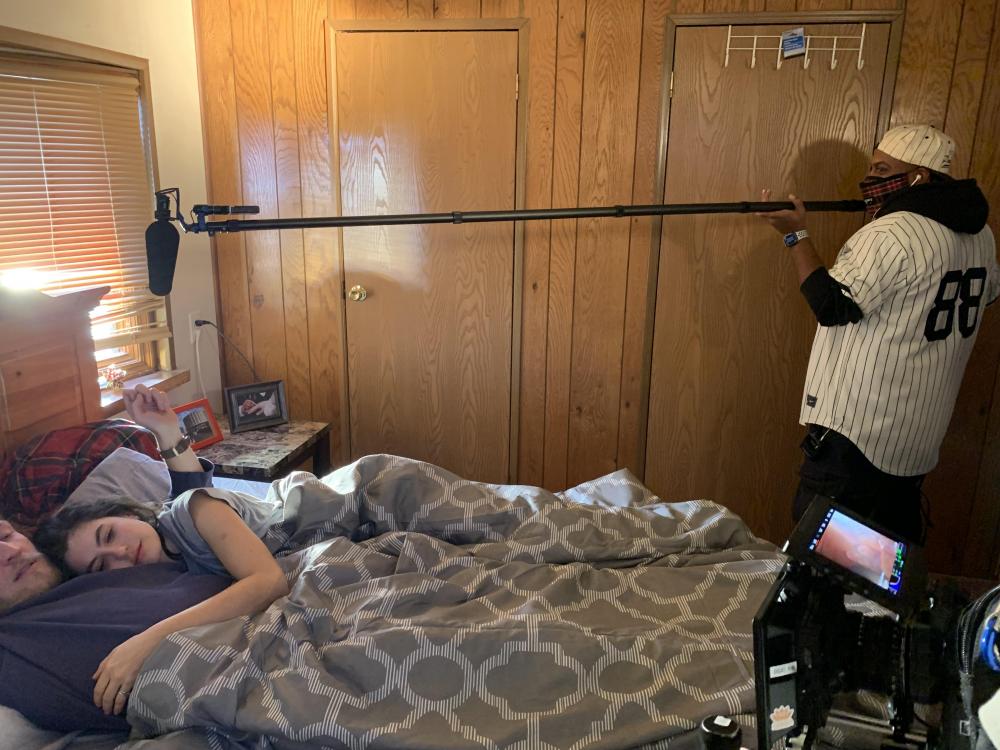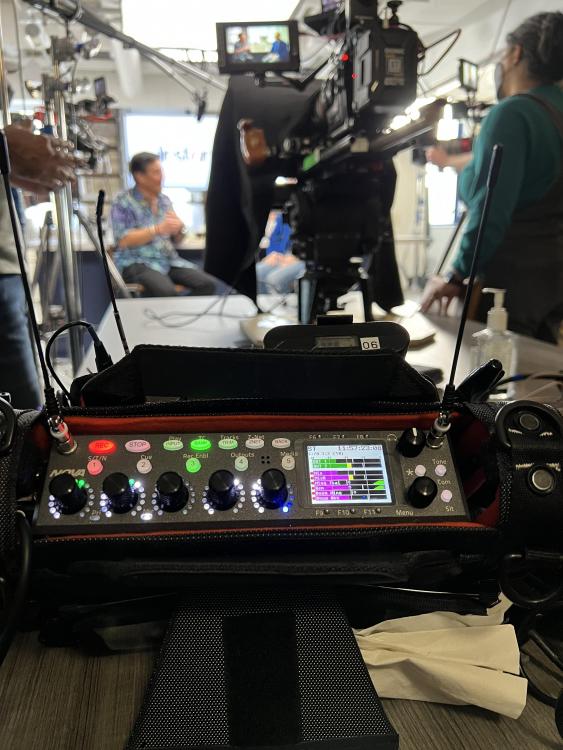-
Posts
228 -
Joined
-
Last visited
-
Days Won
1
Profile Information
-
Location
Chicago, IL
-
About
Chicago-based location sound mixer specializing in narrative, corporate, documentary, and reality productions. Available to work locally and abroad.
-
Interested in Sound for Picture
Yes
Recent Profile Visitors
10,112 profile views
-
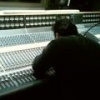
Does Anybody have an analog XLR board for 744T?
Carlos Maeda replied to RadoStefanov's topic in Equipment
Didn’t Sound Devices used to partner up with retailers outside the U.S. to act as authorized repair centers? If so, maybe one of them have some spare parts lying around. -
To my knowledge, no one makes a receiver capable of deciphering a digital signal from multiple brand transmitters. Unlike analog companding, every manufacturer has their own way of transmitting/receiving Ones and Zeros that makes them incompatible with each other. As others have suggested, your easiest solution would be to procure additional EW-DP receivers that can all receive signal from a common Sennheiser digital transmitter. If that form factor does not work for you, you’ll unfortunately have to resort to a separate transmitter/receiver system to dedicate for IEMs, or scrap the EW-DPs entirely and change your whole setup to something like Sennheiser analog (G4tx + G4rx/IEMs), Wisycom analog (MTP + MPRs), Lectro analog (various tx/rx combos + R1a), Lectro digital (DCHT + DCHR/M2Rs), or Zaxcom digital (CL + RX200/URXs).
-
I currently own the S-QT and M-QT, and will likely buy an XL-QT at some point later this year. VdB currently has the best "collapsed-to-extended" ratio of any boom pole on the market. My S-QT fits into a 1535 Pelican upright along the lid's edge, not even diagonally. The quarter turn collars are ok; sometimes you need more force to keep the sections from collapsing. They work as advertised for the most part. If your mic setups are lightweight, then there's almost zero flex. Here's a shot of my friend using my M-QT with a 4017C in a Cinela and a ZMT transmitter, and it's pretty flat. Not sure how they'd hold up if you have a heavier setup at the business end. I will say that the sections are noisy when extending/collapsing, so if you do that mid-take often, the VdB might not be the best for you. They also advertise the removable tips can be used as a mic quick-release mount, nut this is only true of the most recent models that have a small set screw to keep the topmost collar from falling off if no tip is installed. The QT poles I bought in late 2019 did not and recently had to order them through Gotham.
-
Here's the user manual. Bottom of page 5 has all the different setup options for TS-3/TS-C. http://www.denecke.com/Support/Documents/Slate Operating Instructions.pdf
-
I’m also part of the “+5dB club.” Partly because I just don’t fully trust Neverclip at the transmitter (I’ve somehow still managed to clip the TX once or twice despite using stock and group-suggested settings), but also because I’m a little OCD and prefer the trim dots on the meters to line up with the “-20” indicator smack in the middle of the screen.
-
A soldered connector will always be more reliable than using microdot adapters. That being said, you gain flexibility with microdot by being able to use those lavs with multiple different connectors and being able to swap them in seconds. You have to weigh the pros/cons and decide for yourself what's best for your specific workflow. FYI, I use mainly DPA and a couple Deity ones for "stunt" roles and they're all on microdot because I sometimes need to switch between Zaxcom 3pin lemo and Lectrosonics 5pin TA5f. My packs don't see too much abuse so I found the flexibility of microdot to be worth the hit in reliability.
-
This would most likely only be a problem if you are working in an RF-coordinated environment where someone is assigning you specific frequencies and marking/double-checking your equipment. Outside of that, it would be very difficult to determine both your gear’s power output and ability to tune outside the legal gap unless they’re close someone was close enough to touch it. Personally, I do just enough coordinated events that it had me feeling a bit uncomfortable about using them entirely, and ended up selling all my b25 gear just to alleviate the potential stress. That’s a decision you’d have to make for yourself. If you’re interested in being fully-legal to operate in the guard bands, I believe Wisycom and their B7-band of gear are currently the only pro wireless to fully meet the legal requirements. Of course that may change as other manufacturers decide for themselves whether it’s worth the investment to come out with new gear designed to work within those parameters. For what it’s worth, I spoke with reps from 4 different “location sound specific” wireless manufacturers at NAB2019 about this very subject, and at the time all but Wisy said it currently wasn’t worth it, but would evaluate again in the future.
-
Carlos Maeda started following Wisycom MPR52 with G3/G4 experiences? and Abetek 'RadCad' - 12 AA Caddy Charger
-

Abetek 'RadCad' - 12 AA Caddy Charger
Carlos Maeda replied to abetek's topic in Manufacturers & Dealers
Reviving this thread to hopefully gain some feedback after extended real-world use. @Constantin @ao @Sndspd any thoughts? -

Wisycom MPR52 with G3/G4 experiences?
Carlos Maeda replied to OnTheSoundSideOfLife's topic in Equipment
@daniel That’s what made me revive this thread. To my knowledge and everything I’ve read so far, only Wisy receivers can emulate EVO modulation not transmitters. @henrimic how would you describe the audio quality of the G3 tx to MCR52? While I would’ve preferred to use Wisy tx for higher power output and wideband spectrum, this could sitll possibly serve my original goal of having a pair of tx transmit “broadcast quality” audio to camera while also being able to listen to either tx via Senn IEM. -

Wisycom MPR52 with G3/G4 experiences?
Carlos Maeda replied to OnTheSoundSideOfLife's topic in Equipment
The goal is to be as efficient with my spectrum use as possible by reducing the number of transmitters needed. In the past I’ve been able to accomplish this with just mono-scratch/reference audio to camera by using a Lectro system all set to IFB mode. Trying to replicate this as best as possible with “broadcast-quality” audio to camera, for the few instances where it’s still necessary. I’ve tried doing this with Lectro SRc/LT in modes 3 and 6 (units were pre-ETSI compliant) with disappointing results. TX to IFB sounded ok in Mode 3 and better in Mode 6, but less than ideal audio with very low gain levels when SRc set to matching mode. I could replicate the same with Lectro’s DHCT and M2R units, but at over $1k a piece that’s a heavy pill to swallow if I want to have 8+ IFBs and hand them out to producers and agency creatives. Hence my desire to find a system that would work the inexpensive yet good sounding Senn IEMs. -

Wisycom MPR52 with G3/G4 experiences?
Carlos Maeda replied to OnTheSoundSideOfLife's topic in Equipment
@Derek H from what I’ve read, is basically a 250mW-only version of the SK2000, and just like the 2K is not available in the A1 (470-516) frequency band I’m looking for. -

Wisycom MPR52 with G3/G4 experiences?
Carlos Maeda replied to OnTheSoundSideOfLife's topic in Equipment
Sorry for reviving an old thread. @TJW I’m curious to hear more about your experience in using Wisycom transmitters with G3/G4 IEM receivers. I’m currently making a switch from Lectro IFB to Sennheiser ones, but want to pair the IEMs with a more capable bag-friendly transmitter. I’m a Zaxcom user and all my talent mics cannot tune below 512, so ideally I’d get IEMs in the A1 band (470-516). Sennheiser currently does not offer the 100mW-capable SK2000 in that band, limiting me to their SK500 G3/G4 transmitters at a 50mW max. Lectro tx in compatibility modes are an option but not that great to my ears. I’d also be interested to hear how good/bad the sound quality is of a Wisycom MCR52 receiving audio from a Wisycom transmitter all in EVO modulation. The “perfect” scenario for me would be to have 2x transmitters in the bag sending “broadcast-quality“ audio to a dual channel receiver on an eng camera, and clients with G4 IEMs being able to tune into the same frequencies. -

A review of Nova “OneUnit” and mrx214 wireless modules.
Carlos Maeda replied to RadoStefanov's topic in Equipment
Now if only they can implement the type of system Shure Axient does, where it can reassign and change freq on both RX and TX within a couple milliseconds. Then again, that's why those systems run for so much more $$$ than anything else. -
I’ve used my CMIT in the -40F Chicago winter last year without any problems. Only issue I’d be worried about is condensation buildup from moving between outdoors and indoors. So long as it’s “climatized” you should be fine.



